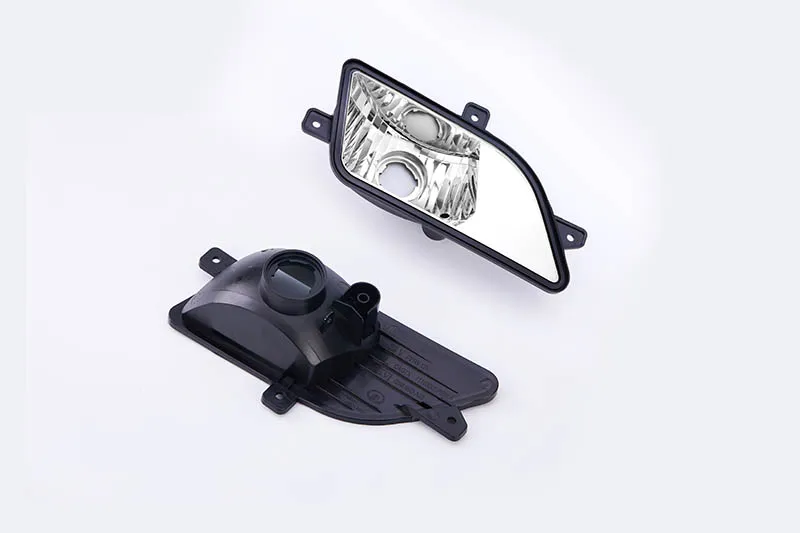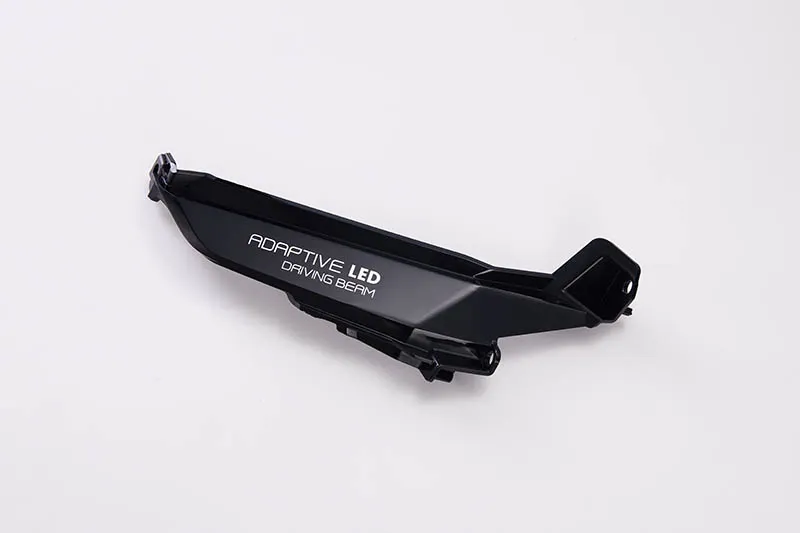Introduction
The automotive industry relies on a vast network of suppliers and manufacturers to produce the millions of parts required to assemble vehicles. Once the parts are manufactured, they must be transported to various locations, including assembly plants, distribution centers, and retail outlets. Efficient and secure transportation is essential to ensure that automotive parts reach their destinations on time and in excellent condition. This article explores the challenges and strategies involved in transporting automotive parts, highlighting the importance of logistics, packaging, and technology in the transportation process.
The Automotive Parts Supply Chain
The transportation of automotive parts is a crucial component of the global automotive supply chain. The supply chain consists of multiple stages, each of which requires precise coordination to ensure that parts are delivered on time and meet the necessary quality standards.
- Tiered Supplier System: In the automotive industry, suppliers are typically categorized into different tiers. Tier 1 suppliers are those that provide components directly to the automotive manufacturer, while Tier 2 and Tier 3 suppliers provide parts to Tier 1 suppliers. As automotive parts are produced and transported from different suppliers across the globe, logistics companies play a pivotal role in ensuring that the right parts are delivered to the right place at the right time.
- JIT (Just-in-Time) Delivery: Automotive manufacturers often operate on a Just-in-Time (JIT) production system, where parts are delivered exactly when needed to avoid inventory buildup. This system minimizes the need for large warehouses and reduces costs but places a heavy reliance on efficient and timely transportation. Delays in the delivery of critical parts can halt production lines, leading to costly downtime.
Modes of Transportation
Transportation of automotive parts involves a variety of methods, each suited to different types of parts and distances. The selection of the appropriate transportation mode is based on factors such as the size, weight, and value of the parts, as well as delivery time requirements.
- Road Transport: Road transportation is the most commonly used method for delivering automotive parts within regions. Trucks equipped with specialized trailers are used to transport parts from manufacturing plants to assembly facilities or warehouses. Road transport is flexible and allows for the direct delivery of parts, but it can be subject to traffic conditions, road closures, and other delays. For large or heavy components, specialized trucks or flatbeds may be required.
- Rail Transport: Rail transport is an efficient method for moving large volumes of parts over long distances, particularly in regions with well-developed rail networks. Rail is cost-effective for transporting bulk items like steel, aluminum, and other raw materials to manufacturing facilities. While rail transport is typically slower than road transport, it is often used for long-haul deliveries and can be more environmentally friendly due to its lower carbon emissions per ton-mile.
- Air Freight: For urgent deliveries or high-value parts, air freight is often used to ensure timely arrival. Air transport is the fastest option and is typically used for small, high-priority parts that need to be delivered quickly. While air freight is more expensive than other forms of transportation, it is essential for minimizing delays in the supply chain, particularly when manufacturing plants are dependent on just-in-time delivery.
- Sea Freight: For international shipments of automotive parts, sea freight is often the most economical option, particularly for large and heavy shipments. Shipping containers are used to transport parts by sea, with ports serving as key hubs in the global supply chain. Although sea freight can be slower than air transport, it is more cost-effective for large volumes and can be combined with other transportation modes (such as rail or road) for final delivery to destination points.
Packaging: Protecting Parts During Transit
Proper packaging is crucial in ensuring that automotive parts are protected from damage during transportation. Automotive parts can be delicate, and exposure to extreme temperatures, moisture, or rough handling can cause significant damage. Packaging must be designed to prevent damage while minimizing transportation costs and environmental impact.
- Custom Packaging: Each automotive part has unique transportation requirements, which means that customized packaging solutions are often needed. For example, fragile components like mirrors, headlights, and sensors are typically packed in cushioned boxes to protect them from shocks and vibrations. Large and bulky parts, such as bumpers or doors, are often wrapped in protective materials like foam or shrink-wrap to prevent scratches and dents.
- Labeling and Identification: Proper labeling is essential to ensure that parts are handled correctly and delivered to the right destination. Each package is typically labeled with information such as the part number, destination, handling instructions, and barcodes for tracking. Labels also help identify fragile or hazardous materials, ensuring that they are handled with care.
- Standardized Containers: To streamline the transportation process, many automotive manufacturers use standardized containers such as Returnable Transport Items (RTIs) or Reusable Plastic Containers (RPCs). These containers are designed to hold automotive parts securely while minimizing waste and reducing costs associated with disposable packaging. RTIs and RPCs can be used repeatedly, reducing the environmental impact of packaging materials.
- Temperature Control: Some automotive parts, such as batteries, adhesives, or certain plastics, require temperature-controlled environments during transportation. Refrigerated containers or climate-controlled trucks are used to maintain the necessary temperature range and prevent damage from exposure to heat or cold.
Challenges in Automotive Parts Transportation
Despite advances in logistics and transportation technology, transporting automotive parts presents several challenges. These challenges can impact delivery times, costs, and the overall efficiency of the supply chain. Some of the most common challenges include:
- Supply Chain Disruptions: Disruptions in the global supply chain, such as natural disasters, pandemics, or political instability, can affect the availability of transportation routes or delay shipments. For example, the COVID-19 pandemic caused widespread disruptions to global supply chains, leading to delays and increased costs in transportation. Manufacturers must be prepared with contingency plans and alternative transportation routes to minimize the impact of such disruptions.
- Customs and Border Delays: International shipments often face delays at customs or border crossings, particularly if proper documentation is not provided. Delays in customs clearance can extend delivery times and increase transportation costs. Companies must ensure that all necessary paperwork, including invoices, certificates of origin, and compliance documentation, is in order to avoid delays.
- Fuel Costs and Environmental Regulations: Fluctuating fuel prices can significantly impact transportation costs, particularly for long-haul shipments. In addition, stricter environmental regulations related to emissions and fuel efficiency are placing increasing pressure on transportation companies to adopt greener practices. As manufacturers move towards more sustainable production methods, they must also ensure that their transportation practices align with environmental goals.
- Security Risks: Automotive parts are often high-value items, making them targets for theft during transit. Security risks such as cargo theft, hijacking, and pilferage can lead to financial losses and delays. To mitigate these risks, transportation companies use advanced tracking systems, GPS monitoring, and security personnel to ensure that parts are delivered safely.
- Inventory Management: Managing inventory across multiple locations can be challenging, especially for large-scale operations. Manufacturers must coordinate the flow of parts to ensure that they are delivered to the right place at the right time, without overstocking or understocking. Effective inventory management systems, including warehouse management software (WMS) and enterprise resource planning (ERP) systems, are crucial to optimize the transportation and distribution of parts.
Technology in Automotive Parts Transportation
In recent years, technology has played an increasingly important role in improving the efficiency and effectiveness of automotive parts transportation. Innovations in tracking, communication, and automation have transformed the logistics industry, providing greater transparency and control over the movement of goods.
- Real-Time Tracking: Real-time tracking systems enable manufacturers to monitor the location and status of automotive parts during transit. GPS and RFID technology provide live updates on the location of shipments, allowing manufacturers to identify potential delays or issues before they become problems. Real-time tracking also helps improve customer service by providing accurate delivery estimates and allowing for proactive communication with customers.
- Predictive Analytics: Predictive analytics uses historical data and machine learning algorithms to forecast potential disruptions in the supply chain, such as weather conditions, transportation bottlenecks, or changes in demand. By anticipating potential issues, manufacturers can adjust their transportation plans and minimize delays.
- Automated Warehouses: Automated warehouses use robotics and AI-powered systems to streamline the storage and retrieval of automotive parts. These systems can reduce human error, improve inventory accuracy, and speed up the loading and unloading of parts, ultimately reducing transportation delays.
- Blockchain Technology: Blockchain is being explored as a way to enhance transparency and security in the transportation process. By providing a decentralized and immutable ledger, blockchain allows manufacturers and logistics providers to track the movement of parts in real time, ensuring that all transactions are recorded and secure.
Conclusion
The transportation of automotive parts is a complex and multifaceted process that requires careful planning, coordination, and execution. From selecting the appropriate transportation modes to ensuring that parts are properly packaged and tracked, every stage of the transportation process is critical to ensuring that parts reach their destinations on time and in excellent condition. Despite the challenges faced by the industry, advances in logistics technology, real-time tracking, and predictive analytics are helping to improve the efficiency and reliability of automotive parts transportation.
As the automotive industry continues to grow and evolve, transportation will remain a key factor in the success of manufacturers and suppliers. By embracing new technologies, optimizing supply chain processes, and addressing logistical challenges, the industry can continue to meet the demands of an increasingly globalized and competitive marketplace.




